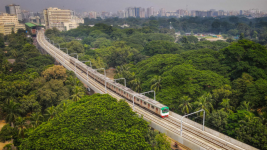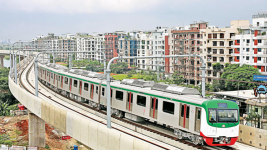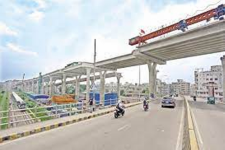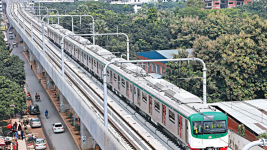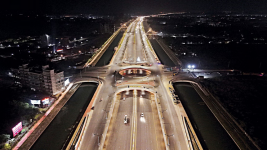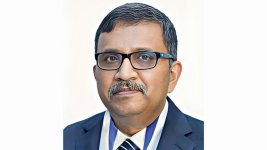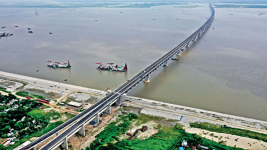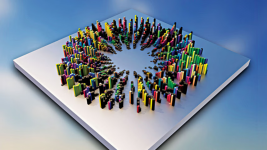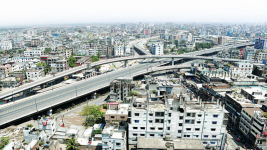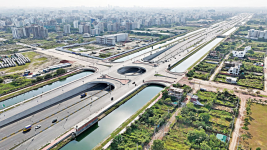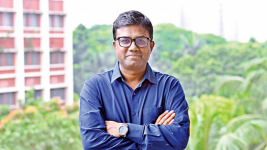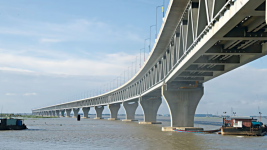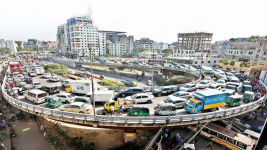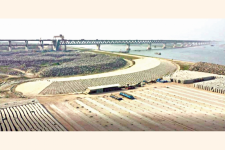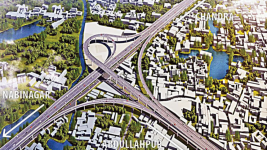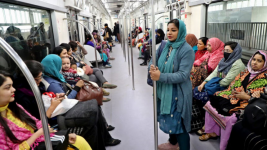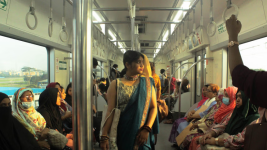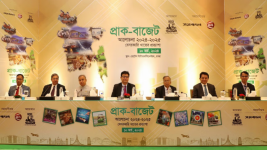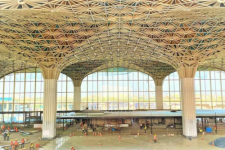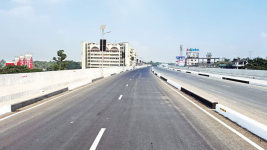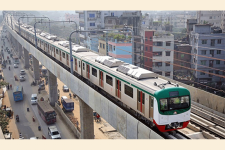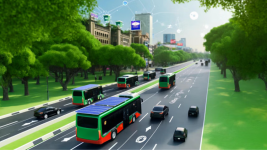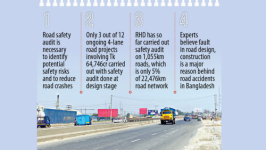The vision of building a sustainable and developed Bangladesh by 2041
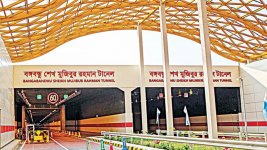
The completion of the Karnaphuli Tunnel is expected to revolutionise transportation dynamics in the Chittagong region, fostering efficient movement of goods and services. PHOTO: Star
The Karnaphuli Tunnel, an ambitious project, seeks to enhance connectivity in the southeastern part of Bangladesh, bridging the gap between Chittagong and Cox's Bazar. Approved in 2016, this underwater tunnel is designed to span the Karnaphuli River, aiming to reduce travel time and traffic congestion. Positioned strategically as a vital link between the east and west banks of the river, it plays a key role in the government's vision for regional integration and improved accessibility, particularly to the Chittagong Hill Tracts. As part of the broader transportation network, it contributes to the world's longest marine drive from Mirershorai to Teknaf and the Asian Highway, connecting Chittagong Port and Matarbari Deep Seaport.
The completion of the Karnaphuli Tunnel is expected to revolutionise transportation dynamics in the Chittagong region, fostering efficient movement of goods and services and, in turn, boosting trade activities. The envisioned enhancement in connectivity is poised to attract investments, stimulate industrial growth, and generate employment opportunities, positioning Chittagong as a pivotal economic hub.
The transformative potential of the Karnaphuli Tunnel extends to the movement of goods and services between Chittagong and Cox's Bazar, two economically crucial centres. By streamlining transportation, the tunnel is anticipated to facilitate trade operations, contributing significantly to overall economic growth. Furthermore, improved connectivity holds promise for the tourism sector, providing easier access to Cox's Bazar, renowned globally for its extensive beach. This increased accessibility is anticipated to drive tourism and subsequently stimulate local economic activities. Beyond its economic impacts, the Karnaphuli Tunnel is expected to catalyse regional development, with improved connectivity often leading to increased investments, job opportunities, and infrastructure development in the surrounding areas. Additionally, there is optimism that the tunnel will play a pivotal role in the establishment of a twin-town on both sides of the river.
However, a critical examination is warranted to assess whether the Karnaphuli Tunnel can effectively realise its stated objectives and deliver the anticipated transformative impact. Additionally, it is crucial to evaluate the prudence of the decision to construct this tunnel.
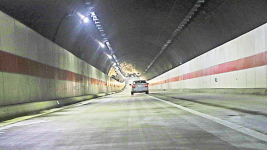
An inside view of the Bangabandhu Sheikh Mujibur Rahman Tunnel under the Karnaphuli river in Chattogram. Photo: Star
Planning issues
The decision to opt for a river-crossing tunnel over a bridge presents inherent challenges, both in terms of construction cost and ongoing maintenance. The justification for choosing a capital-intensive tunnel is rooted in concerns about siltation and potential obstruction to ship movements due to strong tidal forces, as well as the scour that could threaten bridge piers. However, this decision seems to overlook the viability of long-span arch, suspension, and cable stayed bridges, which many countries prefer for their cost-effectiveness, environmental friendliness, and sustainability in addressing sedimentation and ship movement issues.
Several weaknesses and planning issues associated with the Karnaphuli Tunnel project include:
1. Ventilation and lighting challenges: The confined structure of the tunnel requires constant artificial ventilation and lighting, adding to construction and operational expenses. Safety and emergency response systems, including passive fire detection and fighting systems and pumping-based drainage systems, contribute to its energy-intensive and resource-intensive nature. The tunnel's operational reliance on costly ICU-like ventilation and lighting systems raises questions about its sustainability, particularly when compared to more modern and eco-friendly alternatives.
2. Cost disparities: The Karnaphuli Tunnel, featuring a shorter diameter and 4.9m headroom instead of the standard 5.5m, comes with a cost that is approximately 1.5 times that of the high-standard double-decker Padma Multipurpose Bridge (PMB). The significantly higher life cycle cost, where the operation and maintenance (O&M) expenses are nearly 3.5 times more expensive than that of PMB, contradicts the principles of sustainable development and national conservation policies, particularly considering the tunnel's higher energy and safety requirements.
3. Toll differentials and financial viability: Road users of the Karnaphuli Tunnel are burdened with tolls 2.5 to 6 times higher than those using the existing Shah Amanat Bridge, raising concerns about the project's financial viability. The significant toll differential poses challenges in attracting the forecasted number of tunnel users and achieving the expected socio-economic return.
4. Lack of provisions for local traffic and integration with master plans: The tunnel lacks provisions for local traffic, including pedestrians, bicycles, CNG, and motorcycles. It does not integrate with the twin-town masterplan, hindering inclusive development and accessibility. The absence of a universal access-controlled lane and interchange facilities further restricts its compatibility with local traffic needs.
5. Access restriction and safety concerns: The tunnel's adoption of a 4.9m headroom, deviating from the RHD standard of 5.5m, raises concerns about access restrictions for certain heavy cargo laden vehicles, including those carrying flammable materials. The screening-based entry system, coupled with higher toll rates, poses obstacles to tunnel accessibility and its productivity. Safety concerns related to elephant crossings and potential conflicts with beach-bound pedestrian movements further diminish its operational capacity.
6. Conflict with climate resilience guidelines: The tunnel, with at-grade approach roads not only conflict with beach-bound pedestrian movements but also does not align with national climate-resilient infrastructure development guidelines for coastal fronts experiencing sea-level rise and land subsidence issues.
7. Limited capacity and aesthetic shortcomings: The tunnel's twin-tube configuration limits its capacity expansion, preventing the implementation of reverse or tidal flow operations during peak hours. Additionally, tunnels are less visually appealing compared to iconic bridges, missing an opportunity to create a landmark structure that attracts tourists and generates non-operational revenue streams.
8. Preference for long span bridges in harbour channels: The absence of bridges with spans greater than 200m in Bangladesh overlooks the global preference for long-span bridges in harbour channels. The choice of a costly tunnel is considered justifiable only in extreme cases where bridge construction is unviable and unavoidable, such as when crossing mountains, historically sensitive areas, or where a sea-crossing bridge is exposed to frequent high-intensity storms. Otherwise, based on cost and operational advantage considerations, a long-span bridge is the best recommended and affordable sustainable solution, similar to the Karnaphuli Channel, which is 800-1000m wide at the mouth.

A critical examination is warranted to assess whether the Karnaphuli Tunnel can effectively realise its stated objectives and deliver the anticipated transformative impact. PHOTO: RAJIB RAIHAN
Exaggeration of expected benefits of tunnel and rational development
Addressing the longstanding concern of insufficient connectivity in the Chittagong region, a crucial economic hub and Bangladesh's second-largest city, prompted the government to undertake the ambitious Karnaphuli Tunnel project. While existing transportation routes faced challenges like congestion and limited capacity, the decision to construct the tunnel seems to be based on a lack of awareness of better alternatives adopted by neighbouring countries. The claim of the Karnaphuli Tunnel being the first of its kind in South-East Asia appears to be a false assertion driven by national pride, potentially resulting in significant costs to road users and hindrance to rapid economic development.
The tunnel development project lacks integration with the twin-town masterplan and does not have a corresponding approach road and connectivity plan with Matarbari and Cox's Bazar. Despite being touted as a groundbreaking development, the Karnaphuli Tunnel, upon completion, reveals itself as merely a river crossing facility with a high cost for road users and severe access restrictions. The objectives and expected returns, including the anticipation of revolutionising transportation, enhancing connectivity, promoting economic prosperity, and fostering regional development by reducing travel time and congestion, seem exaggerated and wishful.
In contrast to these claims, the original objectives, particularly for developing robust connectivity with Dhaka, industrial and energy hubs, and the tourist destination of Cox's Bazar, would have been better served by a double-decker 6-8 lane long-span suspension or cable stayed bridge.
Such a bridge could have been seamlessly integrated with a railway/metro system, harmonising with the twin-town land-use and transport master plan. To fulfil the twin-town development objective, the bridge-based crossing facility would have been accessible to all modes of city transport, including pedestrians, bicycles, and various paratransit options such as CNG and Leguna. Moreover, despite the crossing site's channel width being nearly 1km, the adoption of the tunnel configuration necessitated an additional 1.4 km approach tunnel. Opting for a bridge would have allowed for a viaduct, a more cost-effective solution that avoids obstructing beach-bound tourist movements and waterfront-based livelihood activities. The current approach roads at both sides of the tunnel, meeting with at-grade roads, obstruct beach accessibility and create a mismatch in the standard of approach roads with the capital-intensive tunnel investment, resulting in unsafe and low-level service conditions. Given these considerations, the justification for the construction of the tunnel over other sustainable, more cost-effective long-span bridge options raises questions.
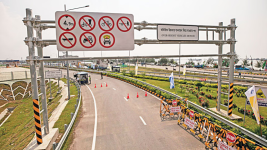
By streamlining transportation, the tunnel is anticipated to facilitate trade operations, contributing significantly to overall economic growth. PHOTO: RAJIB RAIHAN
Lessons learned
The option of a long-span suspension/cable-stayed bridge with no pier in the navigational channel, complemented by viaduct-type approaches, would have been a superior choice. This alternative offers several advantages, including the absence of sedimentation problems and threats to ship movements. More significantly, it ensures expressway-standard safety and facilitates faster mobility without impeding beach-bound individuals, tourist movements, or elephant pass. This choice would have been in harmony with the goals of twin-city development and the promotion of tourist-friendly coastal activities and business environments.
However, to capitalise on these benefits and align with broader long-term objectives, there is a need for meticulous planning. This includes the formulation of a comprehensive land-use master plan and the establishment of downstream access-controlled expressway connectivity. This network should strategically link with deep-sea ports, industrial hubs, and Cox's Bazar. Crucially, achieving these goals requires seamless inter-departmental integration facilitated through the active involvement of the planning commission. Only through such concerted efforts can the potential of this alternative be fully realised, contributing to a more sustainable, smart, and developed Bangladesh in the long run.
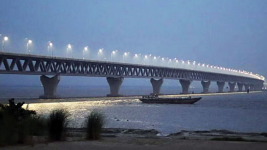
The decision to opt for a river-crossing tunnel over a bridge presents inherent challenges. PHOTO: COLLECTED
Way forward
To prevent the recurrence of decision failure events like the Karnaphuli Tunnel, it is imperative to adopt proactive measures and strategic shifts in our approach to infrastructure planning. Drawing lessons from other developed countries, the following initiatives may be proposed:
1. Public hearings for informed decision-making: Emulate the practices of developed nations by instituting public hearings before embarking on capital-intensive infrastructural initiatives. Public engagement ensures a transparent decision-making process, incorporates diverse perspectives, and aligns projects with the actual needs of the community. This participatory approach minimises the risk of decision failures and enhances public trust.
2. Strengthening planning units: All key implementation organisations, including Bangladesh Bridge Authority, Roads and Highways Department, Local Government Engineering Department, RAJUK, and Chittagong Development Authority, should establish robust planning units equipped with enhanced institutional capacities. The focus should be on cultivating in-house expertise for thorough research and development-based planning. Relying solely on external consultants may fall short in ensuring sustainable development within the constraints of limited land and construction resources.
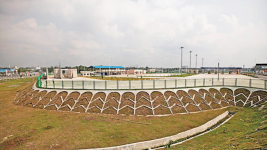
The Karnaphuli Tunnel, an ambitious project, seeks to enhance connectivity in the southeastern part of Bangladesh, bridging the gap between Chittagong and Cox’s Bazar. PHOTO: RAJIB RAIHAN
3. Infrastructure development aligned with sustainable goals: Emphasise resource-conserving, sustainable, and smart integrated development. This necessitates a shift in the mindset of the planning commission towards adopting quality infrastructures that are appropriate and sustainable for local conditions. The planning commission should transform into a planning-compliant department, boasting a pool of reputable foreign and local land-use, and transport planners. This shift is crucial for guiding integrated, balanced, multi-modal planning, ensuring resource efficiency, and future-proofing infrastructure development with a higher economic return multiplier.
4. Investment in human capital and research: Recognise the need to invest in human capital and research to address the challenges associated with LDC graduation and achieve 4th industrial development. Improving transport infrastructures and logistics is crucial to reducing transport costs and mitigating the LDC graduation shock. Furthermore, sustainable development necessitates an enhanced contribution of local expertise, supported by a home-grown research and development-driven knowledge base.
5. Long span bridges for water crossings: Acknowledge the unique challenges presented by rivers in Bangladesh, including sediment load and perennial siltation problems. When implementing waterways-based freight transportation systems, contemplate the use of long-span bridges featuring substantial navigational clearance, like renowned structures such as Australia's Sydney Harbor Bridge, Hong Kong's Stonecutter Bridge, the USA's Brooklyn Bridge, and Vietnam's Dragon Bridge. The good news is that recently RHD and BBA have proposed bridges at Kewatkhali, Mymensingh, and Matlab, Chandpur, each with a span of 350m to 400m, respectively. Shunning false pride in tunnel building, we must go a long way to catch up with our neighbouring countries, embracing more appropriate longer span bridge development.
In conclusion, a comprehensive way forward involves a combination of public involvement, strengthened planning units, a shift in mindset towards sustainability, and a focus on long-span bridges for water crossings. These measures collectively contribute to the vision of building a sustainable, smart, and developed Bangladesh by 2041.
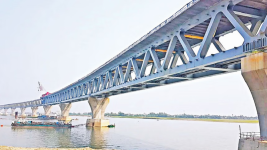
The Karnaphuli Tunnel, featuring a shorter diameter and 4.9m headroom instead of the standard 5.5m, comes with a cost that is approximately 1.5 times that of the high-standard double-decker Padma Multipurpose Bridge (PMB). PHOTO: COLLECTED
